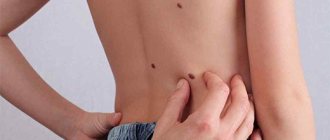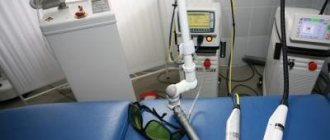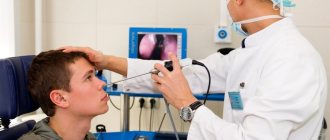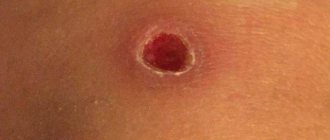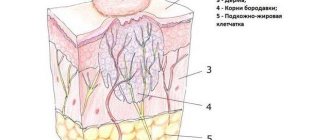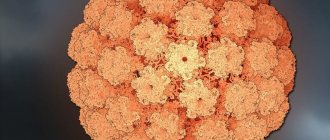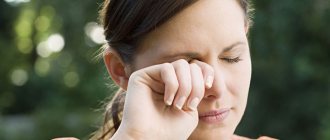Treatment and treatment of the wound after laser removal of a wart
After laser removal of a wart, the wound needs to be treated daily with antiseptics (iodine, potassium permanganate solution, Fukortsin), and then treated with ointments with a wound-healing effect (Kontraktubeks, Actovegin, Panthenol).
How to heal an open wound
In case of an open wound, it is necessary to use drying agents for treatment; to do this, lubricate the surface 2-3 times a day with one of the following preparations:
- iodine,
- brilliant green,
- strong solution of potassium permanganate,
- Fukortsin,
- Chlorhexidine,
- Miramistin.
Drying agents create crusts on the surface, under which new skin forms.
From the first days, it is recommended to take vitamin preparations and tinctures with an immunomodulatory effect (for example, lemongrass, echinacea). They are prescribed by a doctor in order to strengthen the immune system and speed up healing. They will also help avoid relapse of the disease. After the dense crusts fall off on their own, ointments and gels are applied to the wound, which have a restorative effect:
- Actovegin,
- Solcoseryl,
- Alantan,
- Panthenol,
- Vulnuzan,
- Bepanten,
- Methyluracil,
- Levomekol,
- Curiosin.
We recommend reading about the effective procedure for electrocoagulation of moles. You will learn about indications and contraindications for the procedure, methodology, rehabilitation period, subsequent skin care, as well as cost. And here is more information about removing a scar on the lip.
Foot treatment after surgery
To treat the foot after cauterization of the wart, antiseptic agents are used: use a sterile bandage or napkins, moisten them in a solution of Chlorhexidine or hydrogen peroxide and gently wipe the feet. Rubbing the wound should be avoided. Iodine or furatsilin solution, Fukortsin, is applied to its surface with a cotton swab. After this, be sure to wait until it dries completely.
If the patient is at home, then you should try to ensure free access of air to the coagulation site as often as possible, so healing will proceed faster. When you plan to go outside, a sterile napkin is applied to the wound and secured with an adhesive plaster. Then put on socks made from natural materials.
After the scab is rejected, the leg can be washed with warm water and baby soap. The wound is blotted with a napkin or cotton pad and a wound healing ointment with an antibacterial effect is applied:
- Levomekol,
- Argosulfan,
- Vulnuzan,
- Baneocin.
It is important that until complete healing there is no contact with potential sources of infection - the beach, swimming pool, gym, bathhouse. Shoes must be closed, but ventilated; in winter, it is imperative to use replacement shoes indoors.
How to treat shoes
After laser cauterization, it is recommended to treat shoes with antiseptics ; to do this, first wash them well and dry them with an electric dryer, then thoroughly wipe the inner surface with one of the solutions:
- Miramistin,
- Chlorhexidine,
- Hydrogen peroxide,
- Formidron.
This is important because the virus that causes warts can survive well in the environment.
Post-operative care and recovery period
Photo: benign formation on the skin
A full life without visits to the doctor can be continued a week after removal. Most often, doctors advise using special creams or ointments for faster healing of the wound.
For several days after removal of the papilloma, water should not be allowed to enter the open wound.
Complications may include that sometimes the area around the wound begins to swell. Then you need to urgently consult a doctor to exclude the possibility of infection (not during the operation, but after it). Most often, the doctor also prescribes the necessary ointments to help restore excellent appearance.
It is important! After laser treatment of papilloma, under no circumstances should sunlight be allowed to enter the treatment site. Follow the rules for about a month.
Also, you should not visit saunas and swimming pools for two weeks, or become overcooled (by taking a cold shower). It is very important not to try to remove dried crust yourself. In order for no trace of papilloma to remain, the crust must fall off on its own (within ten days).
Removal of papillomas from the eyelids
Photo: papillary fibroepithelioma on the eyelids
Removing papillomas with a laser on the eyelid is also considered a good solution. The procedure will be performed under local anesthesia to minimize pain in such a delicate area.
Since the laser removal procedure is bloodless, there is also no need to worry about excess fluid getting into your eyes.
The absence of charms and scars is another plus, why many remove papillomas on the eyelid using the laser method.
You should consider laser removal of papillomas if:
- Formations appeared on the arms, legs and face;
- Pain appeared in the area of the papilloma;
- It begins to grow, increase in size;
- Bleeding noticed.
Wound care
Rehabilitation after a laser procedure is aimed at restoring the integrity of the skin. To do this you need:
- Protection from mechanical damage. This is especially important after removing a plantar wart with a laser; here the skin can be easily injured by tearing off the scab ahead of time. To prevent this from happening, you should wear comfortable shoes. It’s better to provide yourself with the opportunity to stay at home for 3.5 days and walk barefoot. Air baths promote healing.
- Water protection. The wound should not be wetted for at least 3 days. It’s better to avoid getting liquid on it until the crust falls off. You can wash in the shower with warm water, do not rub the area where the wart was with a washcloth.
- Use of external means. It is imperative to disinfect the wound with an antiseptic. This can be a 0.5% solution of chlorhexidine, potassium permanganate or calendula infusion. Anti-inflammatory creams and gels are also prescribed.
- When the crust falls off and a renewed area is revealed, it can be smeared with Contractubex to avoid the formation of a pronounced scar. After removing a wart with a laser, you should check with your doctor about what to treat the skin with.
- Protection from external influences. You cannot go to the sauna, take a hot bath, sunbathe, swim in a pool or open water for at least a month. All this is fraught with infection, the appearance of a hypertrophic or keloid scar, and impaired skin pigmentation. The use of decorative cosmetics is prohibited at least until the crust falls off.
- You cannot use aggressive care products on the area of the healed wound for another month.
One of the frequently asked questions about laser wart removal is how long it takes for the damage to heal. Normally, the crust falls off after 5 to 10 days. This depends on the extent of the wound, the ability of the skin to regenerate, and the age of the patient.
Methodology
You can cauterize a wart with liquid nitrogen at a medical center or cosmetology clinic. At the initial consultation, the specialist examines the affected areas of the skin, determines the type, quantity, and size of tumors. The specialist can write out a referral for tests - this will help avoid unexpected complications during the procedure. In some cases, for example, if the size of the formation is very small, the doctor may recommend postponing the procedure for a while.
Cryodestruction can be carried out using:
- a special apparatus for cryogenic freezing - a cryoapplicator (nozzles of various diameters and configurations connected to a reservoir containing liquid nitrogen);
- an ordinary applicator (a wooden stick with a cotton swab, which is moistened with liquid nitrogen);
- freezing spray.
A special cryoapplicator is most convenient to use.
- treating the skin in the area of intended exposure with an antiseptic;
- applying a special gel or cream to the wart to soften the upper keratinized layer of the formation;
- exposure of the wart with a tip connected to a reservoir containing liquid nitrogen (the diameter of the nozzle should be 1.5 mm larger than the size of the wart) or an applicator dipped in liquid, or spraying the tumor with a spray.
The exposure time varies between 10-30 seconds. The procedure is repeated several times as the liquid nitrogen evaporates quickly. Under the influence of the active substance, the wart turns white, then a white border appears around the formation, which becomes a signal to stop the procedure.
The severity of discomfort during cryodestruction depends on the location and size of the wart, the sensitivity of the skin and the patient’s pain threshold.
Removal is carried out by cryomassage, which is carried out only with the help of a cryoapplicator. The tip is placed parallel to the skin, quickly, with slight pressure, moved with rotational movements along the surface of the formation until it turns pale. Up to 4 sessions are carried out with breaks of 1-2 minutes.
Freezing warts located near the nail plate or on the foot has a stronger and longer-lasting effect. Accordingly, the patient’s pain in this case is more pronounced. To completely get rid of the formation, you will need to undergo up to 5 sessions with an interval of 3-5 days.
- The doctor examines the skin formation, selects the intensity of exposure and wavelength.
- Local anesthesia is given.
- A laser is brought to the wart at a short distance and the desired area of the epidermis is cauterized.
Next, a scab appears in this area, which completely disappears after 7–10 days.
How long does it take for a wound to heal after laser removal of a wart?
After laser removal of a small wart, the wound usually heals within 5-7 days. If the diameter of the formation is from 1 cm, then the process lasts for 3-4 weeks. A longer period is possible with:
- non-compliance with the rules of treatment with drying agents,
- frequent getting wet,
- friction with clothing, injury,
- diseases - low immunity, diabetes, circulatory disorders,
- bad habits - smoking, alcohol abuse,
- poor nutrition – lack of protein (meat, fish, cottage cheese, cheese), vitamins (rose hips, black currants, fresh herbs).
Reasons for long healing
Sometimes there are no visible problems with skin exposed to laser treatment, but regeneration takes too long. This is already a risk factor for other complications. What can help prolong the process:
- The patient's existing diseases. These are diabetes mellitus, decreased blood clotting, and hormonal imbalance. If your finger looks swollen for a long time after removing a wart with a laser, hurts, and does not heal, it makes sense to get examined. Although it is better to do this before the procedure.
- Suppressed immunity. Even if the patient does not have pathologies that are contraindications to laser treatment, the body may not be able to cope with the restoration of a small area of skin. We need help in the form of taking vitamins and immunomodulators. But this should be discussed with your doctor.
- Failure to comply with rehabilitation conditions. Not everyone understands that even a trivial wound needs special care.
- Bad habits. Smoking and alcohol interfere with normal blood circulation and disrupt the production of fibroblasts. This leads to a slowdown in the development of epithelium, the formation of granulation tissue and connective tissue. You should give up habits a few days before the procedure and adhere to a healthy lifestyle for at least a week afterwards.
Watch this video about the causes of long-term non-healing wounds:
What warts are removed by cryodestruction?
Based on their morphological structure and localization, warts are classified into several types.
- Ordinary (vulgar). Painless, dense and keratinized, round structures with a rough surface. The size of the formations varies from 1-2 mm to 5 mm. Closely spaced warts can merge into large plaques. They are most often localized on the hands, less often they affect the skin of the face.
- Plantar. A type of common wart, which is a rounded growth of a dirty gray color. They are distinguished by a deeper location in the skin tissues and larger sizes (up to 2 cm). They are localized on the foot in places that experience the greatest friction from the shoe. Causes severe pain while walking.
- Youth (flat). Small (up to 3 mm) dense formations of flesh-colored or pink color have an irregular rounded shape (usually the appearance of nodules) and a smooth surface. They appear mainly in young people and are localized mainly on the face and hands. Painful when touched. Most often they occur in places of mechanical damage to the skin (scratches, abrasions, cuts).
We suggest you familiarize yourself with Itching all over the body without rashes: the reasons why the skin itches without a rash and visible redness
All of the listed types of warts can be removed using cryodestruction. In some cases, if the wart is located on the neck, face, hands and other open areas of the body, removal is only cosmetic in nature and allows you to get rid of aesthetic discomfort. However, there are situations when wart removal is mandatory.
Patients often ask their friends and relatives if it is possible to get rid of warts. As a rule, there are opponents of any impact on neoplasms, who believe that over time they will disappear on their own. But if the wart is not removed in time, over time you may encounter problems:
- New ones will appear next to one formation; changes can affect the surrounding tissues, for example, lead to damage to the nails.
- Neoplasms can develop into a malignant form.
- The presence of papillomas on open areas of the body poses a danger to other people and negatively affects the perception of the wearer’s appearance.
- The growths can cause itching and pain.
- If there are papillomas on the body of a pregnant woman, then the risk of infecting the child during childbirth increases. In addition, under the influence of hormonal changes, formations can develop into malignant ones.
In all of the above situations, warts are inconvenient for a person and negatively affect his health and sense of self. In such situations, tumors must be removed.
Whether warts need to be removed is often decided by a person solely for aesthetic reasons. And doctors recommend resorting to radical removal of these tumors only in exceptional situations. It is imperative to remove the wart if it interferes with normal life activities. Such cases include:
- Plantar formations. Their presence interferes with normal walking; such formations are easily injured, which leads to the risk of infectious processes.
- Condylomas on the genitals. They tend to grow and can penetrate the anus or urinary tract. In this case, the process of urination and defecation becomes difficult.
- Malignant neoplasms. In such a situation, thinking about whether it is worth removing the wart is inappropriate, because the longer you delay, the more tissue will be affected by the oncological process. And this significantly complicates treatment and reduces the guarantee of its success.
Before removing tumors, it is advisable to check for malignancy. If the growth is of a malignant nature, then the removal of warts should be carried out not by a cosmetologist, but by an oncology specialist. Getting rid of warts is carried out in combination with therapy with immunostimulating and antiviral drugs that will suppress the activity of the virus, preventing the reappearance of growths after removal.
Is it possible to wet your foot after removing a wart?
You can wet your foot after removing a wart after the dry crusts have fallen off. In the first 3 days, it is recommended to only wipe with wet wipes and completely avoid contact with water. It is important that the shoes are ventilated and that the socks are made of cotton or woolen threads. Excessive sweating of the feet often causes long-term healing of the wound and inflammation.
After a week, if healing is good and the crusts are rejected, you are allowed to wash your leg, but you should not rub the cauterized area with a towel. It is better not to use cosmetics other than regular baby soap.
Possible consequences after the procedure
The disappearance of a wart under the influence of a laser beam occurs in a short time. But still, this process is gradual, since it represents the alternate burning of layers of living tissue. After completion of the manipulation, the skin remains damaged. This is manifested by the formation of a scab on it, that is, a dry crust. The surface should recover after this.
In the process of treating a tumor with a laser, errors are possible, for example, too long or deep exposure. Failure to follow rehabilitation rules can also cause additional injuries to the skin. There are also individual characteristics of the body that can affect the result. And it is not always possible to predict the reaction of living tissue. Any of these factors can lead to the fact that laser wart removal will cause negative consequences:
- Suppuration of the wound. It manifests itself in that the skin around the scab turns red, swells, and hurts. If the crust peels off, purulent contents flow out from under it.
- Formation of a rough scar. Normal skin restoration occurs due to the formation of epithelial cells, granulation tissue, and then connective tissue. But if the synthesis of substances is disrupted, their deficiency or excess occurs. Problems may arise due to the inflammatory process, or the body’s characteristics may be to blame. As a result, instead of smooth skin, a scar or dent appears above its surface.
- Damage to surrounding tissues. Immediately after the procedure, redness appears on them, the local temperature rises, watery blisters form, and the area itself looks swollen. These are all signs of a burn, indicating excessive exposure to radiation during manipulation.
- Pigmentation disorder. A dark or white spot may appear in the area affected by the laser. This happens when the device is configured incorrectly or the care conditions are ignored. But don’t worry about redness remaining after the scab falls off. Normally, the stain will soon fade.
- Long healing time. The complication carries the risk of suppuration, scar formation or hyperpigmentation.
Advantages and disadvantages
The main advantages of the cryodestruction procedure include:
- high efficiency;
- lack of special training;
- simplicity and short duration of the procedure;
- avoiding infection of nearby skin tissues (due to deep freezing);
- no bleeding during freezing;
- affordability.
The disadvantages include:
- pain (if the wart is located on sensitive areas of the skin, there is severe pain during and for several days after the procedure; to alleviate the condition, the patient is forced to take painkillers);
- difficulty in controlling the depth of exposure, which creates a risk of relapse (re-growth of the formation);
- injury to nearby healthy tissues, risk of burns, the appearance of scars at the site of the wart, dependence of the results of removal on the professionalism of the doctor;
- long-term recovery compared to other methods (for example, after laser removal, recovery lasts only 5 days);
- the need for constant aseptic treatment of the resulting bubble;
- impossibility of further histological examination of wart tissue;
- the need for several sessions when removing large formations.
Complications during the rehabilitation period after laser removal of a plantar wart
The consequences of removing a plantar wart with a laser include pain, swelling (the finger becomes swollen), a burn, and a scar. During the rehabilitation period, you may encounter complications - the wound does not heal well, oozes, and bleeds. Some of them are a reaction of the body; infection may also occur, which is often explained by poor care of the wound surface.
Swollen finger
If the wart was on the finger, then after laser therapy it may swell. This reaction is caused by thermal effects on tissue and occurs for no more than 2-3 days. A more serious situation occurs if the swelling does not subside and the skin becomes hot to the touch. This is often how an infectious process manifests itself.
It is recommended to immediately consult a surgeon, especially if swelling of the finger is accompanied by:
- severe pain
- pulsating (twitches finger),
- an increase in local or general temperature.
Antibiotics and surgical debridement may be necessary.
The wound doesn't heal
If the wound does not heal, then the reason for this is a weakening of the body, as well as microbial infection. Medicines to enhance tissue repair are prescribed by the doctor. He may recommend:
- immunomodulators – Methyluracil, Apilak,
- vitamins A, E and ascorbic acid, folic acid, group B,
- microelements – silicon, zinc,
- activators of metabolic processes - Actovegin, Solcoseryl,
- enzymes – Wobenzym, Phlogenzyme,
- biostimulants – aloe juice, Kalanchoe, mumiyo.
Some of them can be applied to the wound (ointments with methyluracil, apilak, Solcoseryl), but most are used orally in the form of tablets or administered by injection. The following external agents also exhibit an active wound-healing effect:
- Panthenol (ointment, aerosol),
- Olazol,
- Bepanten plus,
- Eplan.
If the cause is suppuration, then it is necessary:
- use of antibiotics,
- opening the lesion to drain pus,
- use of antiseptics (Decamethoxin, Dioxidin),
- introduction of enzymes (Trypsin, Chymotrypsin),
- application of antibacterial ointments (Baneocin, Bonderm).
Burn
Burns occur more often with particularly sensitive skin. It manifests itself as redness, soreness, and swelling. The formation of bubbles filled with liquid is also possible. In this case, it is recommended to lubricate the area of inflamed skin with Argosulfan, and treat the wound with Miramistin or Dioxidin. If you neglect care, the condition of the skin may worsen, redness will spread, and the healing process will be delayed.
Scar after removal
The formation of a scar after wart removal is possible due to an individual reaction to the damage. In patients with a tendency to increased proliferation of connective tissue, hypertrophic and keloid scars occur. In the first case, they are characterized by thickening in the area of cauterization, and in the second they spread beyond the wound. To prevent it, you must use the following means:
- Contractubex,
- Mederma,
- Dermatix,
- Dermofibrase,
- Kelocode.
They are prescribed when a removed wart is localized mainly on open parts of the body - face, décolleté, hands. Apply after the scabs fall off. Rub into newly formed skin with light massaging movements 2-3 times a day.
If the scar could not be prevented, then there are methods to get rid of such a cosmetic defect:
- liquid nitrogen treatment,
- laser resurfacing,
- administration of drugs using ultrasound (phonophoresis),
- injections of hormones and hyaluronic acid.
Watch this video about the consequences of laser wart removal:
Wart recurrence after laser removal
Since the papilloma virus, which causes warts, is in the body and manifests itself when the immune system is weakened, it is very often possible for a wart to recur after laser removal. It can occur in the same place or nearby. The risk of its formation does not depend on the method of treatment or correct cauterization. To prevent recurrence, it is recommended:
- antiviral agents – Groprinosin, Proteflazid,
- immunomodulators – Immunomax, Cycloferon,
- local drugs to destroy the virus - Keravort, Panavir.
The wound is oozing, fluid and blood are released
When large warts are removed, the wounds take a long time to heal, ooze, bleed, and release fluid. When localized on the foot, this is aggravated by injury when walking, moisture in shoes, and friction. The crusts may come off ahead of schedule, and the skin underneath is highly vulnerable.
In such cases, it is necessary to use drugs that will dry out and accelerate epithelization - the formation of a new surface layer. These include:
- Actovegin gel,
- Solcoseryl gel,
- Pantexol,
- Baneocin powder.
Pus has come out: is it dangerous?
If pus comes out of the wound at the site of laser cauterization, then this is dangerous, since suppuration can spread to neighboring tissues, and in conditions of low immune protection, serious complications are possible - an abscess, phlegmon, sepsis. Antibiotic therapy is prescribed for treatment, but only after sufficient drainage of pus has been ensured. Therefore, you should immediately contact a surgeon to examine the wound.
If it hurts
The site of laser treatment of a wart may hurt from 3-5 days to 2 weeks. It depends on the individual sensitivity, location, and size of the skin lesion. To reduce pain, the doctor may prescribe Paracetamol, Nimesil. If the pain does not decrease, and the condition of the surrounding skin has worsened - there is pronounced swelling, redness, and body temperature has increased, then these are signs of infection. You should definitely visit a surgeon for an examination.
We recommend reading about wart removal with liquid nitrogen. You will learn about the advantages of the technique, indications and contraindications for it, the process of getting rid of the growth, the rehabilitation period, possible complications, and cost. And here is more information about laser removal of rosacea.
After such a simple manipulation as laser removal of warts, healing in most cases proceeds quickly. You just need to put in a little effort to restore it. Then the result will be smooth skin with an even tone and without the slightest trace of intervention.
Indications for mandatory removal
- Inflammation of the skin at the treatment site
- Increased blood pressure before the procedure
- Cancer of any location
- ARVI and any increase in temperature
- Herpes on the skin
Wart removal is prescribed for the following diseases:
- vulgar warts and papillomas on the palms, hands and fingers (HPV strains 2 and 3);
- plantar warts (HPV strains 1, 2 and 4);
- flat warts (HPV strains 3, 10, 28 and 49);
- genital warts and condylomas (HPV strains 7 and 11);
- filiform warts (HPV strains 26, 27 and 29).
Indications for the procedure may include the following symptoms:
- abnormally rapid spread of skin growths throughout the body;
- rapid growth of individual neoplasms
- modification of the color, structure and relief of the wart;
- peeling and bleeding on the surface of the growth;
- painful sensations on palpation.
The listed signs may indicate the degeneration of the neoplasm into a malignant tumor. They often occur after arbitrary trauma to the wart, which can result in serious complications.
Involves classic excision of the tumor with a scalpel. Used in cases of large warts. During the procedure, bleeding may occur, because... the edges of the wound do not coagulate. With deep roots of the wart, complete resection is impossible, so the likelihood of recurrence is high.
It is carried out using specific local drugs - keratolytics. In clinical practice, Solcoderm is often used. It is applied precisely to the warts and left for up to 20 minutes. As a result, the growth becomes mummified and rejected. For a lasting effect, at least 6 procedures are required.
Cold therapy or cryotherapy is an effective and safe option for wart removal. It involves treating epidermal growths with liquid nitrogen steam. Under the influence of extremely cold temperatures (-196°C), both the cap and the roots of the new growth are destroyed. There are no scars or pigmentation left at the treatment site.
One of the oldest methods of wart removal. Currently used to eliminate growths from the palms and feet. The skin is treated with an antiseptic and anesthetized (infiltration and application anesthesia is possible). The device that generates the electric current is adjusted, then brought to the tumor and cauterized. The method is characterized by average effectiveness.
A non-contact and bloodless way to remove warts. It is performed with a radio knife that synthesizes high frequency waves. The device simultaneously resects the growth and coagulates small vessels along the edge of the wound. Bleeding and infection are excluded. The skin at the site of the removed tumor is evenly regenerated, so there are no marks left on it.
Laser therapy is the most advanced technology for combating skin growths. It is based on the thermal effect of a laser beam. The radiation penetrates to a clearly defined depth and vaporizes pathological tissue layer by layer, simultaneously “sealing” the edges of the wound. The bactericidal properties of the beam prevent the spread of infection. There are no scars after the procedure. The risk of relapse is minimal.
Treatment takes place on an outpatient basis. The doctor treats the skin with a disinfecting solution, applies an anesthetic cream, and sets up the equipment. The tip of the device is brought to the wart, and the device itself is activated. A small tumor is removed instantly – in 10-15 seconds. Large growths are removed within 1-2 minutes. In one session, up to 15-20 warts can be removed. The removed material is sent for histology.
The effectiveness of therapy varies between 55-95%, depending on the strain of the virus and the course of the disease. Relapses occur in 22-25% of patients.
Removal of warts has the following contraindications:
- fresh tan (natural and artificial);
- active phase of herpes;
- dermatological lesions at the location of the wart;
- acute inflammation and infections in the body;
- decompensated diabetes mellitus;
- coagulation disorders;
- oncological pathologies;
- pregnancy.
Warts are benign formations, however, in certain situations they can degenerate into a malignant form. Therefore, removal of warts with nitrogen (or another method) must be carried out if:
- the appearance (color, shape, size) of the formation changes;
- due to the peculiarities of its location, the wart is often injured (when shaving, combing) or constantly rubs against clothing;
- in the area where the wart is located, itching, burning, and severe pain are felt;
- the wart bleeds and festeres;
- The number of formations is rapidly increasing.
In essence, cryodestruction is the freezing of warts, which is carried out using liquid nitrogen (a liquid with a boiling point of 196 ° C). Local impact on the formation of ultra-low temperatures that occur during the evaporation of nitrogen leads to spasm of the capillaries and the formation of ice crystals in the cells and intercellular fluid, cessation of blood supply and nutrition to the cells of the formation. As a result, the wart tissue is destroyed and dies, peels off, and healthy skin cells are restored in their place.
https://www.youtube.com/watch?v=zqtEzAXkYTU
Liquid nitrogen for warts is contraindicated for use when:
- herpes;
- skin lesions in areas located close to the wart;
- rosacea (expansion and fragility of capillaries caused by impaired blood microcirculation);
- acute infections, inflammatory diseases of internal organs;
- high blood pressure, diseases of the hematopoietic system;
- diabetes mellitus;
- hepatitis, immunodeficiency conditions (HIV);
- epilepsy;
- psycho-emotional instability;
- individual nitrogen intolerance, allergies to cold;
- pregnancy, lactation.

